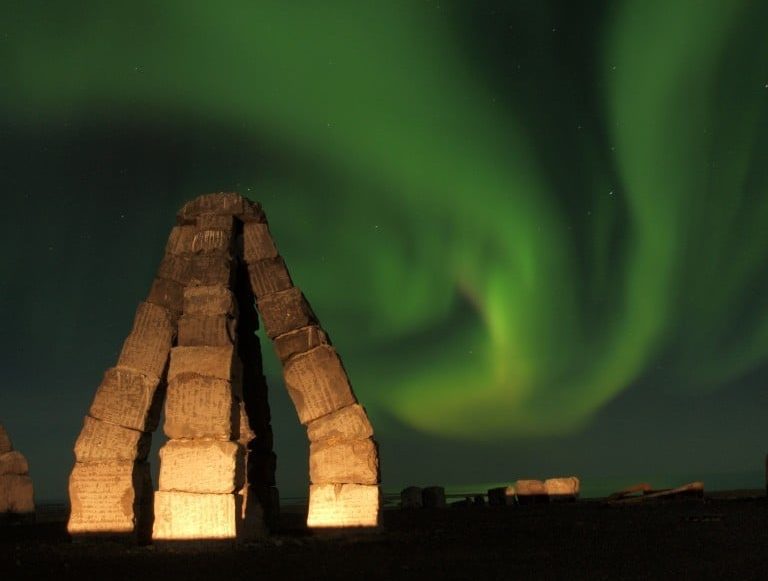
Auroras are the result of disturbances in the magnetosphere caused by solar wind. These disturbances are sometimes strong enough to alter the trajectories of charged particles in both solar wind and magnetospheric plasma. These particles, mainly electrons and protons, precipitate into the upper atmosphere (thermosphere/exosphere). For this incredible display to be witnessed, there needs to strong solar activity, clear skies, and as little light as possible.
To increase the likeliness of spotting Auroras it is recommended to book a tour with an experienced guide who knows the best spots.
Can I see them all year round?
The Northern Lights of Iceland can only be seen in the winter months. The brightness of the ‘Midnight Sun’ obscures the Northern Lights during the summer month. Through the end of May until the beginning of August the nights are too bright to see them.
What is the best time to see them?
The Northern Lights in Iceland can be seen whenever the sky is dark. In December, therefore, they may be visible from three in the afternoon until nine in the morning. However, due to the earth’s rotation, its atmosphere and its magnetosphere in relation to Iceland’s position on the globe, the time when they are most likely to be seen is between 22:00 and midnight. Of course, the least optimal times are those around sunrise and sunset, where light pollution significantly dims them.
What else is good to know?
- Avoid urban areas or light pollution because any forms of light dim the brightness of the auroras. Some great spots around Húsavík are mentioned below.
- Extend the length of your holiday so you catch more windows and increase likeliness to see them.
- Be well prepared and patient. Many layers of warm clothing, hot drinks and a good location are key to success. Auroras come and go as they please and it may take some time until they appear, but the reward can be incredible.
- Make use of modern technology. Iceland’s weather website shows the cloud cover allowing you to plan your reach in the area with the clearest skies. The aurora forecast predicts the likeliness of Northern Lights. This forecast is measured from 0-9, with 3 and above considered promising. Several Apps and Facebook groups also help with the hunt.
- Don’t stop directly on the road or stand on the road while observing or waiting for Northern Lights. Choose a safe location at the side of the road because the following traffic might not see you or expect anybody to stand on the road in a dark winter night. When you found a safe location, turn off the lights of your vehicle as courtesy to other observers.
- Check road.is and vedur.is for the actual road and weather condition before you go out hunting, don’t put yourself in danger just because the prediction for Northern Lights is very good.
Observation Spots around Húsavík
Kaldbakskot
GPS: 66°01’25.9″N 17°21’22.5″W
This place is right at road 85 at the southern end of town and well accessible in winter time.
Gonhóll
GPS 66°03’50.4″N 17°20’37.1″W
This location is at the northern end of town at road 85 and well accessible in winter time.
Þeistareykir
GPS: 66°00’58.1″N 17°15’25.2″W
This location is above Húsavík and might be difficult to reach in winter time because the weather and snow is often much heavier up in the mountains than in the bay. A 4×4 car is required in winter time.